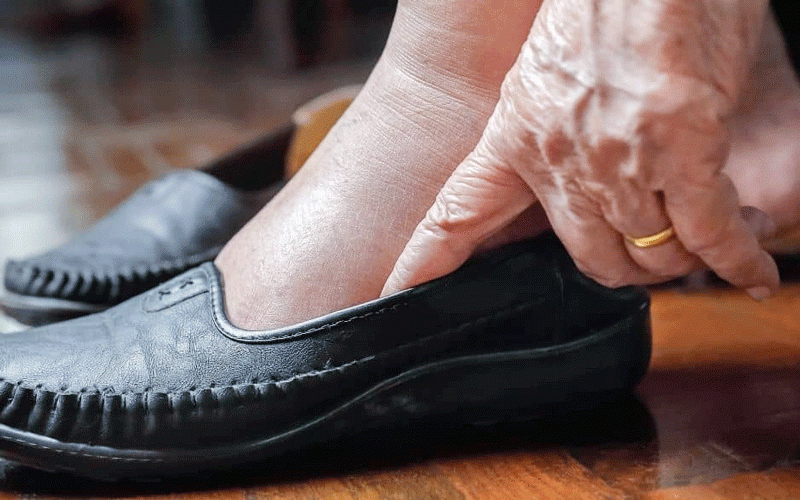
At Sandringham her house was a brick structure with an asbestos roof, quite modern and imposing in that setting but the floors although clean were grey and dusty and somehow looked out of place for such a modern house. It was the hut in Zvimba which evokes my memories of cleanliness. Dark earthy glowing floors, reflecting the fire on the hearth, and that distinctive smell of cow dung, and no flies
I asked a few colleagues and friends about traditional ways of caring for floors.While most people were not very sure of the method or quantity of ingredients to be mixed, they all agreed that those floors held very warm and endearing memories of times gone by and of their mothers and grandmothers. Someone remembered how it was her special task to shine the mapfihwa (hearth stone) to a high gloss.
Sadly my grandmother is no longer with us but because I knew what pride she took in her home and floor, I felt I had to pay a special tribute not only to her and all other grandmothers, but also to that floor I first encountered more than 50 years ago. I don’t know whether the cleaning and maintenance of floors in the various regions of Zimbabwe has a regional bias perhaps influenced by the vegetation or soils. A few years ago I travelled to Chikaka with my adult children, to show them my grandmothers’ home. Neighbours and relatives kindly welcomed us and allowed us to visit with them. We visited Mr John Chirimanyemba’s home and I was once again floored by the rich patina and cleanliness of the floor in his hut
This week in the cleaning diary for Thursday we take a detour down memory lane and see how the rural housewife manages her floors. I am reliably informed by Vuvudzai Mugwidi of Domboshawa that the responsibility for cleaning and polishing floors rests with the women and young girls. Floors are cleaned weekly just as we wash, mop and apply polish to our floors in the modern household. The hut is emptied of all furnishings and the floor swept. There are two methods used, the one uses clay while the other uses cow dung. The best clay is obtained from swampy areas and has to be very dark, a thick dropping consistency is made by mixing the clay with water. Once the clay is ready it is poured onto the clean floor and spread out evenly ensuring that there are no lumps or bumps. The floor is then allowed to dry and once dry the women and girls get on their hands and knees once more and over the floor with smooth stones repeatedly until a satisfactory sheen and glow is achieved. After this the floor is swept clean, unfortunately this process is hard going for the ladies and has to be repeated often.
Leaves may also be used to deepen the colour and sheen and give a greater shine. One has to take care not to use plants which are likely to be poisonous or have unpleasant odours, leaves of the jatrofa plant I believe are much sought after, as the waxy oily leaf imparts a dark gloss to the floor.
When using cow dung, it has to be fresh. The dung is mixed with water to a spreading consistency, it must not be runny. The method is as for the clay and once dry the floor may be glazed over with the smooth stones and leaves ranging from the jatrofa to the mapudzi and mushamba, a type of climber related to the pumpkin and melon family.











